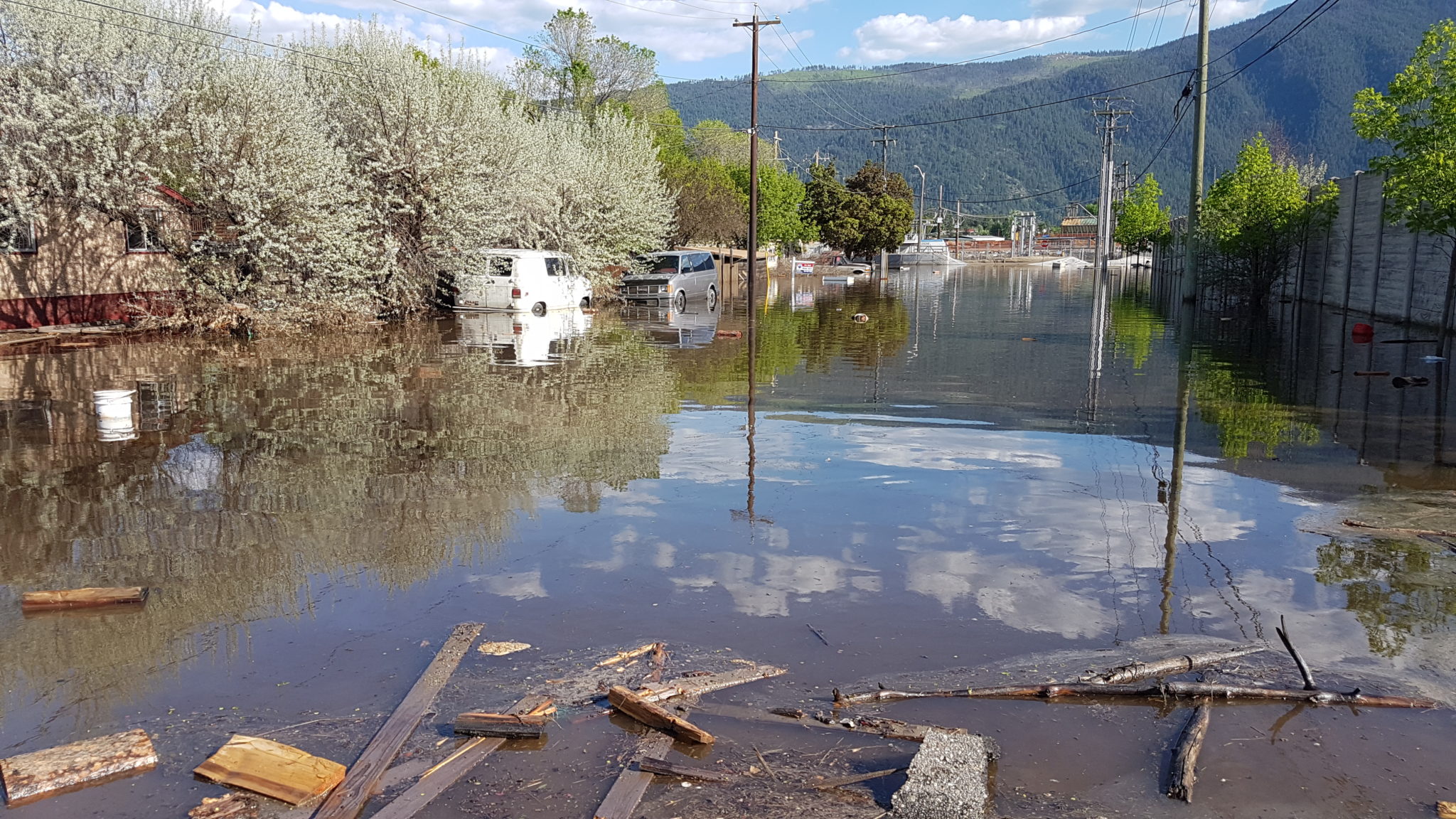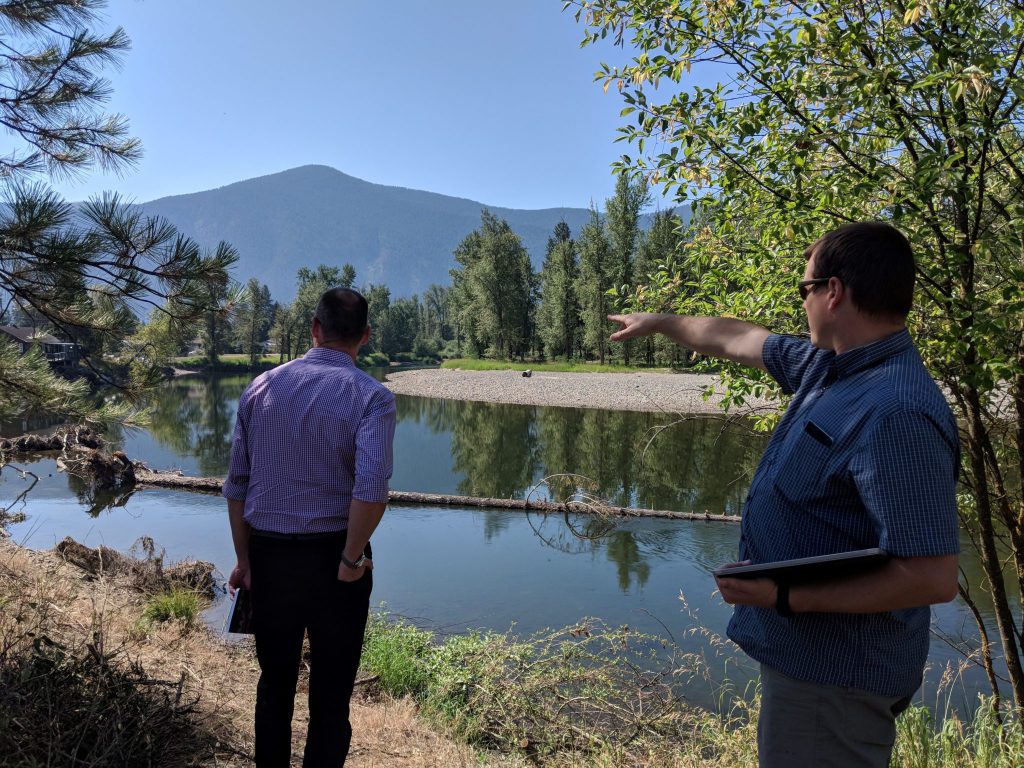
23 July 2018
Nobody Left Behind
How the City of Grand Forks is turning a one-in-200-year flooding event into an opportunity for long-term housing solutions for their community.
In early May, many residents of the City of Grand Forks and neighbouring areas of the Regional District of Kootenay-Boundary were forced from their homes as flood waters rose from the Granby and Kettle Rivers. The immediate response was quick, with the City happily reporting that aside from a few near misses, there were no injuries as a result of what is being called a one-in-200-year flooding event. Nearly two months on, the focus is now on how to provide interim and long-term help to the Region and people affected by the flood.
“We’re currently assessing the needs,” reports Cavan Gates, Deputy Manager of Operations and Sustainability for the City of Grand Forks. “We need to move quickly. We’ve got about four weeks to start making some critical decisions about next steps.” However, because of so many unknown variables, the process of how they get there is ever evolving.
Scott Shepherd, a consultant from Urban Systems Ltd. has built a relationship with the City over many years, and prior to the flood, was helping them develop a Flood Management and Response Plan. Following the event, he and Donalda Ritchie, also a consultant at Urban Systems Ltd., set out working on the infrastructure response, but Scott recognized the need to bring in housing experts to help develop a plan to ensure each resident was comfortably housed as quickly as possible.
As Community and Housing Development Leads with Urban Matters, Matt Thomson and Lee Prevost stepped in to help the City both assess their current needs and look ahead. But instead of following the more traditional plan of building a temporary camp-style community using portable trailers, Lee and Matt saw an opportunity to implement some quick and inexpensive solutions that had the potential to free up resources to address the pre-identified rise in homelessness in the area.
Assessing the Housing Situation in Grand Forks
“There are two things going on,” explains Matt. “One is an ongoing needs assessment determining which housing has been affected by the flood and what households need what kind of support.” This is Matt’s focus in the recovery efforts. “Lee’s focus is working on shaping the response and what that looks like.” Still in the early stages of assessment, Matt is working from the City’s main database where the affected homes have been catalogued using the new data management system called Lightship. Once he has reviewed all the available data, he can help establish the more immediate housing needs, how long people will need those temporary options for, as well as areas where more long-term planning is needed.
“The City recognizes the need for a fast response program,” says Lee. The proposed solution? “We’re looking at a new model using campers, trailers, secondary suites, tiny homes etc., on resident’s land or, as much as possible, within the community where they are connected while they rehabilitate and rebuild their homes.” The solution is not yet commonly used in disaster response, but Lee points out that it is based on lessons learned from other communities in North America. Where a temporary development is more common, this new solution means less upfront infrastructure and development costs – for instance – significantly lower costs to connect to (sewer, electricity), but access to existing support amenities. Remaining closer to their homes, allows residents to stay connected and supported by their neighbours.
Developing an Adaptable Plan
At the earliest stages of disaster recovery, it’s difficult to estimate the medium and long-term need for housing. Yet the nature of the traditional housing response is to build a temporary community, often a significant distance away from the impacted communities. Substantial costs are incurred both to connect to existing (or construct new) electrical, sewer and water services as well as waste and recycling. In addition, there is the expense of creating support amenities like recreation, laundry and transportation networks. Many of these costs can be avoided by leveraging those that already exist in the impacted communities. Equally important, is that the fast response program buys time for residents to progress towards returning to their homes and for responders to more accurately identify the need for medium and long-term housing. Resources can thereby be more effectively targeted. While not ideal, often residents are able to complete sufficient repairs to return to their homes within the first few months. This seldom means everything is back to normal, rather that their homes meet minimum requirements for living. The remaining repairs then occur over the next months and years.
The challenge is that until people return to their homes and assess the damage, it’s incredibly difficult to truly know how long people will need temporary housing for. Matt and Lee acknowledge that the needs are falling consistently every week as people are getting back into their homes.
“It’s really interesting because of how things are changing by the day and by the week,” reveals Matt. “Every time we start to get a sense of the numbers, that changes by the time we get to documenting it. So, it’s definitely challenging, but integrating the short-term and long-term is new.” He notes that in his work in community housing, he’s more typically dealing with long-term housing needs assessment, quite a different exercise from looking at the more immediate needs in response to the flooding.

Working Against Time
In looking at inexpensive short-term options, however, it is allowing the team to move quicker to identify and build long-term housing solutions in order to beat the winter. Prior to the flood, the City had already recognized the need for more purpose built rental, which the proposed solution will help in actualizing. “Typically, in terms of most vulnerable and most in need, are people on the lower end of the spectrum, people working service jobs, for minimum wage, and single parents. Based on the census numbers there were about 165 households that were experiencing affordability issues, and about 210 that were facing some sort of housing issue including affordability, state of repair and overcrowding, and those are the renters.”
In the end, Matt and Lee are using the short-term crisis in order to establish a long-term solution, using the funding provided to look at more long-term housing needs. “Instead of overbuilding the short and medium-term housing that’s required, let’s come up with some really innovative solutions to meet the need right now, and then use the program efficiencies to address the long-term housing problem.”
A Plan for Everyone and Everything
This is the first time developing needs assessment in response to an emergency for both Lee and Matt and has been an incredible learning experience they now see being applicable to developing a needs assessment and solutions for any community following a disaster event, be it flood, slides, fires or otherwise. But the variability is definitely keeping them in a constant state of evaluation and adaptation.
“There’s a lot of other efforts that we don’t know about,” Lee states. He explains that community support efforts are not as easy to document, whether that’s neighbours helping to rebuild together, or family providing housing. “It’s so iterative that until we actually have housing options opening, we won’t know the true needs. In reality, we’ll likely end up over-estimating most of our need all the way through, but that’s the right thing to do to make sure we don’t leave anybody behind.”




